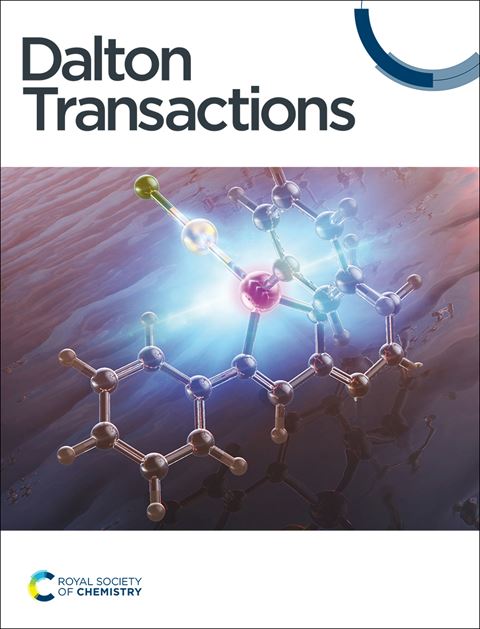Ca7Mg1.8Zn0.2Ga6O18:Bi3+/Mn4+ phosphor: energy transfer enables tunable colour emission and high sensitivity in optical thermometry
IF 3.5
3区 化学
Q2 CHEMISTRY, INORGANIC & NUCLEAR
引用次数: 0
Abstract
Recent advancements in optical thermometry utilizing the fluorescence intensity ratio (FIR) technology have attracted tremendous attention in real-time temperature measurements due to its numerous advantages, such as high sensitivity. In this work, we rationally designed an FIR-type thermometer by utilizing the distinctive thermal responses of the blue and far-red emissions from Bi3+ and Mn4+ activators, respectively. To achieve a broad range of FIR values, we first optimized the blue emission of Ca7Mg2-xZnxGa6O18:0.05Bi3+ (CMZxGO:0.05Bi3+) through Zn2+-to-Mg2+ substitution and then utilized Bi3+/Mn4+ codoping into the optimal composition to realize dual emission. The blue emission of CMZxGO:0.05Bi3+ was improved significantly, which is associated with complex spectroscopic red and blue shifts due to the competitive effect of crystal field splitting and centroid shift for Bi3+-emitters. Additionally, Bi3+/Mn4+-codoped CMZ0.2GO:0.05Bi3+/yMn4+ phosphors exhibit tunable colour emission from blue to deep-red, arising from an increased energy transfer efficiency from Bi3+ to Mn4+ upon increasing the Mn4+-content. Benefitting from this energy transfer, Bi3+ and Mn4+ activators display severe thermal quenching and high thermal stability, respectively, thereby resulting in a high relative sensitivity (Sr) of 1.64% K-1 to temperature measurement. This Sr value surpasses that of most Bi3+/Mn4+- and Bi3+/Eu3+-codoped optical thermometers, implying the promising application potential of CMZ0.2GO:0.05Bi3+/0.001Mn4+ as an optical thermometer.求助全文
约1分钟内获得全文
求助全文
来源期刊

Dalton Transactions
化学-无机化学与核化学
CiteScore
6.60
自引率
7.50%
发文量
1832
审稿时长
1.5 months
期刊介绍:
Dalton Transactions is a journal for all areas of inorganic chemistry, which encompasses the organometallic, bioinorganic and materials chemistry of the elements, with applications including synthesis, catalysis, energy conversion/storage, electrical devices and medicine. Dalton Transactions welcomes high-quality, original submissions in all of these areas and more, where the advancement of knowledge in inorganic chemistry is significant.
 求助内容:
求助内容: 应助结果提醒方式:
应助结果提醒方式:


